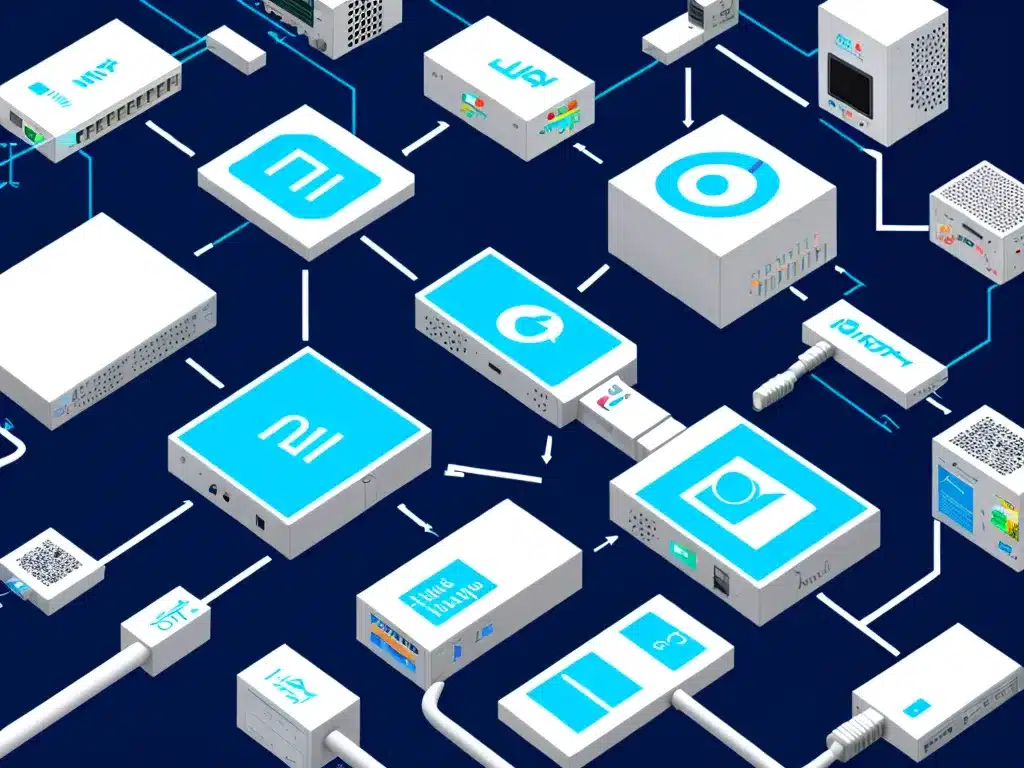
Introduction
The Internet of Things (IoT) is growing rapidly, with businesses looking to connect all kinds of devices and equipment to the internet. To enable IoT use cases, low power wide area networks (LPWANs) have emerged as an ideal connectivity option. Within LPWANs, there are three major competing technologies – NB-IoT, LoRa and SigFox.
Each has its own advantages and disadvantages. As an IoT solution architect, it is crucial to understand the key differences between NB-IoT, LoRa and SigFox. This allows you to make an informed decision on which technology to use for your specific IoT use case and requirements.
In this extensive article, I will compare NB-IoT, LoRa and SigFox across various parameters to help you choose the right IoT connectivity option.
Background of NB-IoT, LoRa and SigFox
First, let’s briefly understand what NB-IoT, LoRa and SigFox are:
NB-IoT
NB-IoT or Narrowband IoT is a cellular-based LPWAN technology standardized by 3GPP. It makes use of licensed spectrum used by mobile operators. NB-IoT focuses on indoor coverage, low cost, long battery life and high connection density.
LoRa
LoRa is an open standard LPWAN solution maintained by the LoRa Alliance. It uses unlicensed radio spectrum in the ISM bands. LoRa emphasizes bidirectional communication, security, mobility and localization services.
SigFox
SigFox is a proprietary LPWAN technology and network operated by SigFox the company. It uses ISM bands and ultra narrow band modulation to enable low power, low throughput connectivity.
Now let’s do a detailed comparison.
Key Parameters for Comparison
I will be comparing NB-IoT, LoRa and SigFox on the following key parameters:
- Spectrum used
- Architecture
- Two-way communication
- Maximum payload size
- Mobility
- Range
- Battery life
- Security
- Roaming capability
- Location services
- Link budget
- Deployment cost
- Development ecosystem
Spectrum Used
NB-IoT
NB-IoT uses licensed cellular spectrum bands. This includes:
- LTE band 1.4 MHz (band 8)
- LTE band 200 kHz (band 20)
- LTE guard band 180 kHz (band 3, 8)
Using licensed spectrum provides guaranteed QoS.
LoRa
LoRa operates in various unlicensed ISM bands:
- 868 MHz in Europe
- 915 MHz in North America
- 433 MHz in Asia
ISM spectrum is free to use but may get crowded.
SigFox
Like LoRa, SigFox uses unlicensed ISM bands:
- 868 MHz in Europe
- 902 MHz in North America
No spectrum cost but quality depends on ISM usage.
Architecture
NB-IoT
NB-IoT uses a cellular architecture. Devices connect directly to existing 4G LTE base stations. Minimal changes required in cellular infrastructure.
LoRa
LoRaWAN architecture with end devices connecting to gateways which connect to network servers over IP. Requires building new infrastructure of gateways.
SigFox
Proprietary network architecture built from ground up. SigFox provides end to end connectivity. No infrastructure for users to manage.
Two-Way Communication
NB-IoT
Bidirectional communication is supported by NB-IoT. Uplink and downlink available between device and application server.
LoRa
Bidirectional communication is a key feature in LoRaWAN. Uplink and downlink present.
SigFox
Primarily uplink-only. Downlink limited to 140 messages of 12 bytes per day. Latency can be high.
Maximum Payload Size
NB-IoT
- Uplink: 1600 bytes
- Downlink: 352 bytes
LoRa
- Uplink: 243 bytes
- Downlink: 243 bytes
SigFox
- Uplink: 12 bytes
- Downlink: 8 bytes
NB-IoT has highest payload capacity.
Mobility
NB-IoT
As a cellular technology, mobility is inherently supported at up to 200 km/h in NB-IoT.
LoRa
Mobility can be supported but with some limitations on handovers between gateways.
SigFox
No support for mobility. Devices must be static or stationary.
Range
NB-IoT
10+ km in rural areas. 1-5 km in urban areas.
LoRa
2-5 km in urban areas. 15 km in rural areas.
SigFox
30-50 km in rural settings. 3-10 km in cities.
SigFox has the longest range.
Battery Life
NB-IoT
~10 years battery life based on power saving features.
LoRa
2-5 years on 2 AA batteries.
SigFox
10+ years with small batteries. Ultra narrow band helps.
NB-IoT and SigFox offer longest battery lifetime.
Security
NB-IoT
High security through tried and tested 3GPP standards like EPS encryption.
LoRa
AES 128 bit encryption ensures security in LoRaWAN.
SigFox
Proprietary RC4 rolling code algorithm used. Relatively unproven.
NB-IoT considered most secure.
Roaming Capability
NB-IoT
Roaming is supported via inter-operator agreements.
LoRa
Limited roaming support only in some regions/countries so far.
SigFox
No roaming. SigFox builds own network in each country.
NB-IoT has best roaming experience.
Location Services
NB-IoT
Can leverage cellular network based location services. Accuracy of <100m.
LoRa
GPS or TDOA techniques available for asset tracking. Accuracy generally 10-30m.
SigFox
Cell ID based coarse grained location. Accuracy of 1-10km only.
LoRa offers best location services.
Link Budget
NB-IoT
164 dB (downlink), 144 dB (uplink)
LoRa
157 dB for both uplink and downlink
SigFox
160 dB link budget
NB-IoT has highest link budget.
Deployment Costs
NB-IoT
Low deployment cost as leverages existing LTE networks.
LoRa
Medium cost – need to deploy gateways.
SigFox
High cost to build proprietary network. Charges subscription fee.
NB-IoT has lowest deployment costs.
Development Ecosystem
NB-IoT
Chipsets from multiple vendors. Developer friendly LTE environment.
LoRa
Semtech dominates chipset supply. Open source SDK.
SigFox
Proprietary chipsets. Closed development environment.
NB-IoT has most vibrant dev ecosystem.
Conclusion
To summarize, here are some high level guidelines on which technology to select:
-
NB-IoT forapplications needing high reliability, security and low latency. Cellular connectivity and roaming make it ideal for asset tracking.
-
LoRa for long range connectivity in rural areas along with mobility support. Bidirectional comms and open standards are key benefits.
-
SigFox for ultra low power static devices needing downlink messages occasionally. Low deployment cost but proprietary technology.
This comprehensive guide has compared NB-IoT vs LoRa vs SigFox across 12 key parameters to assist in selecting the most optimal LPWAN connectivity for your IoT use case. Each technology has its pros and cons, so evaluate them closely during your decision making process.












